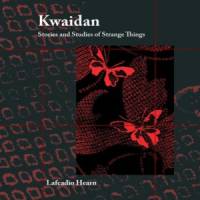What is it about "Kwaidan"? It wasn't Lafcadio Hearn's first take on Japanese ghost stories — it wasn't even his first such book whose title was a single Japanese word starting with "K" ("Kotto" was published two years earlier, in 1902). But it's "Kwaidan" that still claims a place in literary history, even as its siblings among Hearn's prodigious oeuvre recede into cult status.
This can partly be attributed to "The Story of Mimi-Nashi-Hoichi" and "Yuki-Onna," the best-known tales from the "Kwaidan" collection, both of which marry slowly ratcheting dread to an eerie, unsettling quasi-climax. It's no coincidence that these are the two stories from this anthology that were included in Masaki Kobayashi's 1964 movie of the same name.
Toward the end of the book Hearn himself begins to appear in the stories, speaking of childhood memories, artfully sighing over the wonders of the mystical land of Horai as though he knew them personally. The book almost feels haunted by its own author, as if the act of retelling these stories — with his wife Setsu's tireless assistance — had set Hearn's melancholy spirit free to roam within them. Perhaps this lingering presence is the reason that "Kwaidan" is viewed with such fondness, no less by the Japanese than by the rest of the world.
Read archived reviews of Japanese classics at jtimes.jp/essential.



